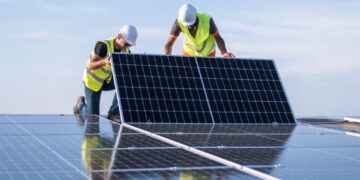After the International Energy Agency (IEA) said that renewables in sub-Saharan Africa alone would increase electricity capacity from 35 gigawatts (GW) to 65 gigawatts (GW), with solar power in Nigeria, hydro in Ethiopia and wind in South Africa leading, and that it would increase by 70 percent, international experts have reflected on this promising industry with international law firm, Hogan Lovells, jumping in to say that the first thing to get in any African country is power, and with renewables coming at the cheapest cost, it would be hugely beneficial.
The immense potential of renewables in Africa has been documented and certain projects are showing signs of meeting this potential once completed, a report by the London based law firm has said.
Alex Harrison, partner at Hogan Lovells said, “I think there is wholesome change, and it is driven by a number of factors but majorly the efficiency of renewable technologies.”
The main drivers of renewables in African countries have been the falling costs and technology efficiency.
The report said that utility-scale solar has dropped by over 90 percent since 2009, which led to rapid adoption and global capacity of 390 gigawatts (GW) in 2017. This is as a result of efficient renewable technology.
The aforementioned optimistic predictions are not without challenges, but the challenges, which include tariff disputes, funding, can be overcome, the report also said.
For tariffs, in Nigeria, solar energy tariffs (N140-N300 per kilowatt) are still higher than the main grid (N31-N40 per kilowatt), but revenue collection rates for solar project developers stand at 98 percent in comparison with 30 percent collection rates of the main grid operators.
Low tariffs are generally encouraged but it must be sustainable and pragmatic.
“A realistic and sustainable tariff is needed, because the tariff needs to reflect the true cost of generation in the country because prices may have not been at right levels because of subsidies,” the report said.
The report also described “microgrids” as a “big part of the future” because of the dispersed nature of the population in Africa.
Microgrids are smaller versions of minigrids, whereby a household generates power by itself.
“In some ways, I think markets like Africa may actually be the places where those microgrid solutions really get developed in numbers and tested,” Harrison added.
The report concluded that the pattern for growth in Africa for renewables looks set to continue to grow but that mostly tariffs must become clear and achievable to safeguard continued investment.























